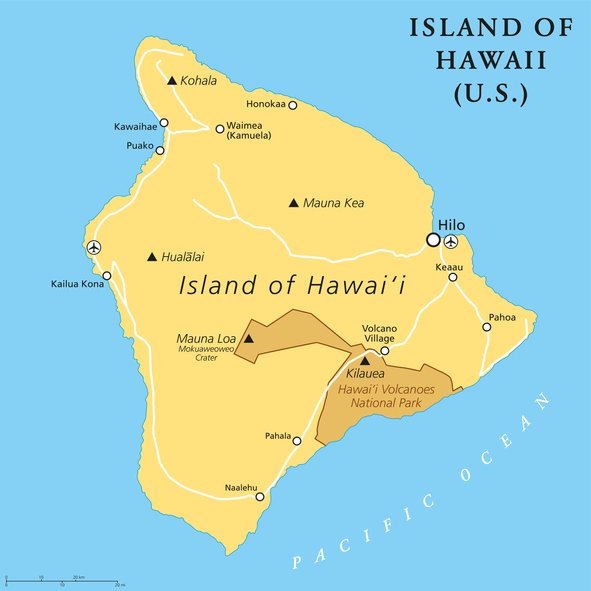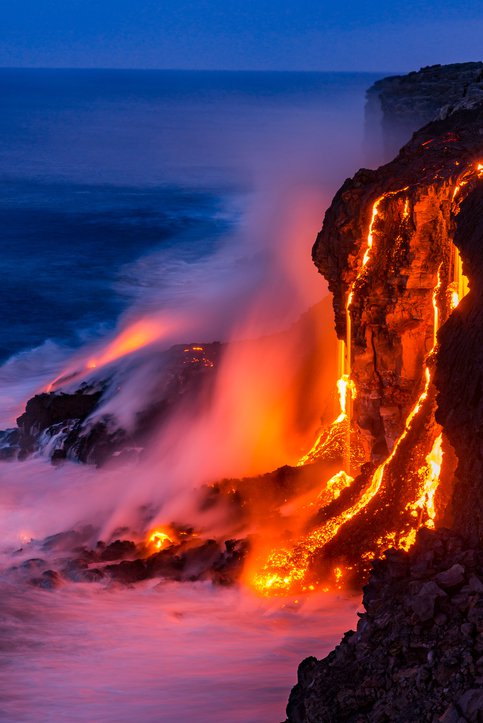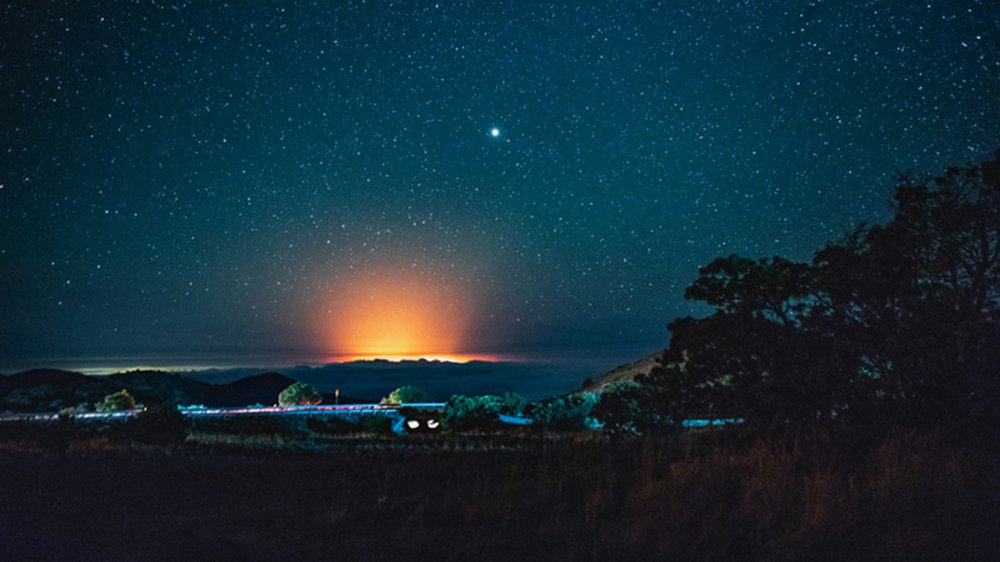Volcano: Hawaii’s Active Volcanoes
The islands of Hawaii all owe their entire existence to volcanic activity. Each island was formed by volcanism over a hotspot, specifically the Hawaiian Hotspot.
A volcanic hotspot is exactly what it sounds like – a place where the Earth’s mantle is unusually hot causing magma to rise. This super-hot magma sometimes pierces the Earth’s crust forming a volcano. As the Pacific tectonic plate, on which Hawaii sits, moves northwestward over the hotspot, new islands form, therefore the southernmost islands are younger, geologically speaking, than the northern ones.

Hawaii is currently home to five active volcanoes: Kilauea, Mauna Loa, Hualalai, Haleakala and Loihi Seamount.
- Kilauea, a shield volcano located on the big island of Hawai’i, is Hawaii’s most active volcano in recorded history. 70% of the volcano’s surface is less than 600 years old and 90% is less than 1,100 years old. Kilauea eruptions feature prominently in many Polynesian legends.
- Mauna Loa, another shield volcano on Hawai’i, is the largest active volcano on Earth. With an elevation of 13,100 and a diameter of 75 miles, it covers over 50% of the island of Hawai’i. Mauna Loa has erupted 33 times since its first documented eruption in 1843. It last erupted in 1984 when lava came within five miles of the city of Hilo.
- Hualalai, also a shield volcano, is the westernmost volcano on the island of Hawai’i. Its most recent eruptions were 1800 through 1801 when two large lava flows reached the ocean. As a matter of fact, the Kona airport is built on the 1801 lava flow.

Image Credit: Getty Images
- Haleakala is a shield volcano that stands over 10,000 feet above the Pacific Ocean and covers 75% of the island area of Maui. Often referred to as “House of the Sun,” Haleakala is geologically older than Hawaii’s other active volcanoes.
- Loihi Seamount is an active volcano under the Pacific Ocean about 20 miles off the southeast coast of the big island of Hawai’i. Loihi rises over 10,000 feet above the ocean floor and is within almost 3,000 feet of the surface. According to the hotspot theory, Loihi could become the next member of the Hawaiian island chain.

Image Credit: Getty Images
Even though it had been erupting continuously since 1983, Kilauea made big news headlines in 2018 when it entered a more dramatic eruptive phase. In late April of 2018, earthquakes shook the East Rift Zone spawning fissures and fountains of lava. On May 3, lava erupted from new fissures, flowing into streets and neighborhoods. By the time the eruption ended in September, the caldera had collapsed by an unprecedented 1,600 feet.
The most destructive volcanic eruption in the US since the 1980 eruption of Mt. St. Helens, Kilauea’s 2018 eruption destroyed 600 homes, caused 24 injuries, closed national parks and changed Hawaii’s coastline. Kilauea is no longer erupting, but scientists believe it will erupt again and are monitoring it closely for signs of further activity.
Love volcanoes? Learn more about volcanoes' awesome power of creation in Volcanoes: The Fires of Creation now showing in the Dome.